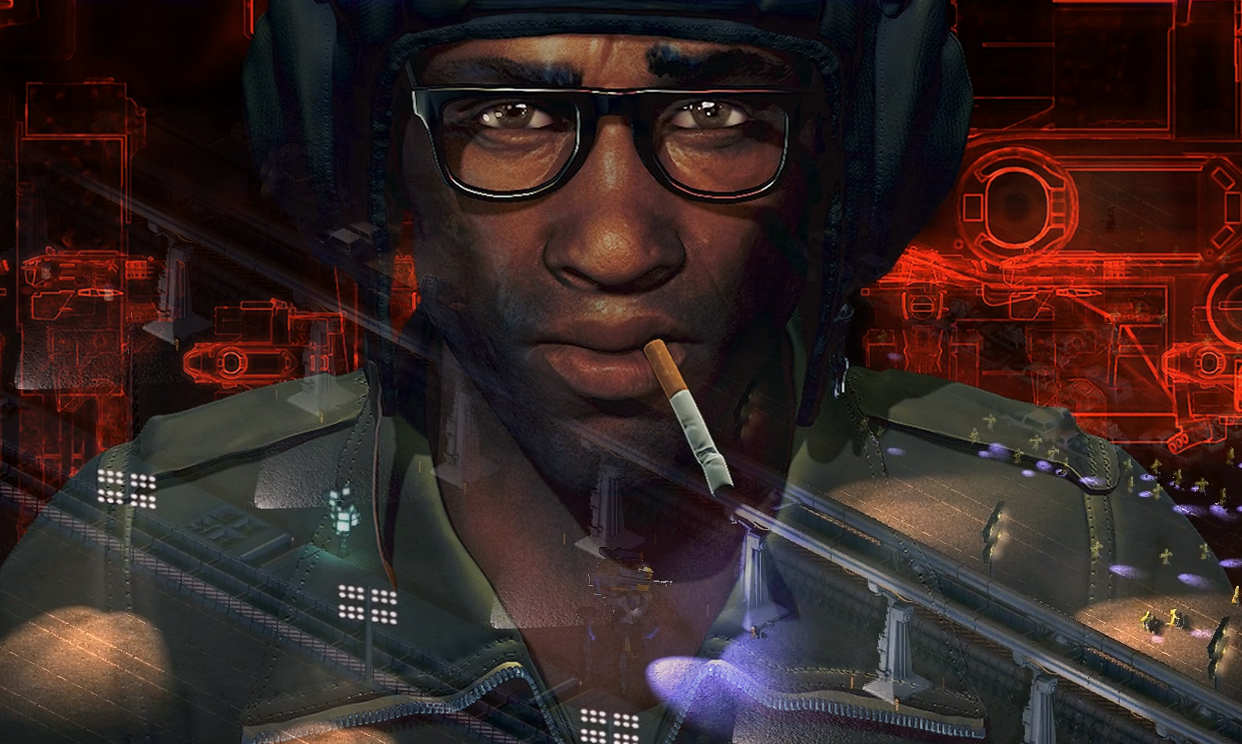Our Verdict
Beyond a fairly daunting control and difficulty curve, Brigador is a gorgeous isometric shooter with a remarkable level of strategy.
PC Gamer's got your back
What is it? A colorful and chaotic isometric 2D mech shooter set in a world steeped in ‘80s futurism.
Price: $20/£14.50
Publisher: Stellar Jockeys
Developer: Stellar Jockeys, Gausswerks
Reviewed on: Windows 10, i7-3770k, 8GB RAM, GeForce GTX 670
Multiplayer: None
Link: Steam
My target is a pedestrian army captain hunkering in a seedy nighttime shopping district. Delicate trunks of neon latticework, Asian pictograms, and corporate logos sprout from the towering city block. I snag a screenshot of the Blade Runner suburb before I lay waste to it with my bipedal mech’s purple and red-hued Thunderclap lasers. The neon jungle crashes to the street and dissolves the pavement. It’s an immensely satisfying display of firepower. It also makes me feel guilty—like kicking over a sandcastle with a 10-ton war machine. Violent building removal comes easy in Brigador, an isometric shooter capturing the chaos of top-down, twin-stick games.
My sightseeing cuts short when a rival mech and a squadron of attack tanks barrel into sight. They're demonstrating one of Brigador's interesting noise attraction mechanics. I haven’t been quiet, exactly. I'm not ready to fight—the mech and tanks are angled at my side, where I'm exposed to dangerous flank shots. With bullets and rockets already screaming my way, I engage my cloak, but I don't get too close; enemies can still see me if I stray near. I instead head for a nearby barrier wall and bulldoze a chunk to get to the opposite side. The opponent mech swivels its barrel in my direction, but my cloak still has a few seconds left of juice. I wrestle with WASD to turn past the hole I made, but the debris makes it tough to keep track of where my feet are pointed.
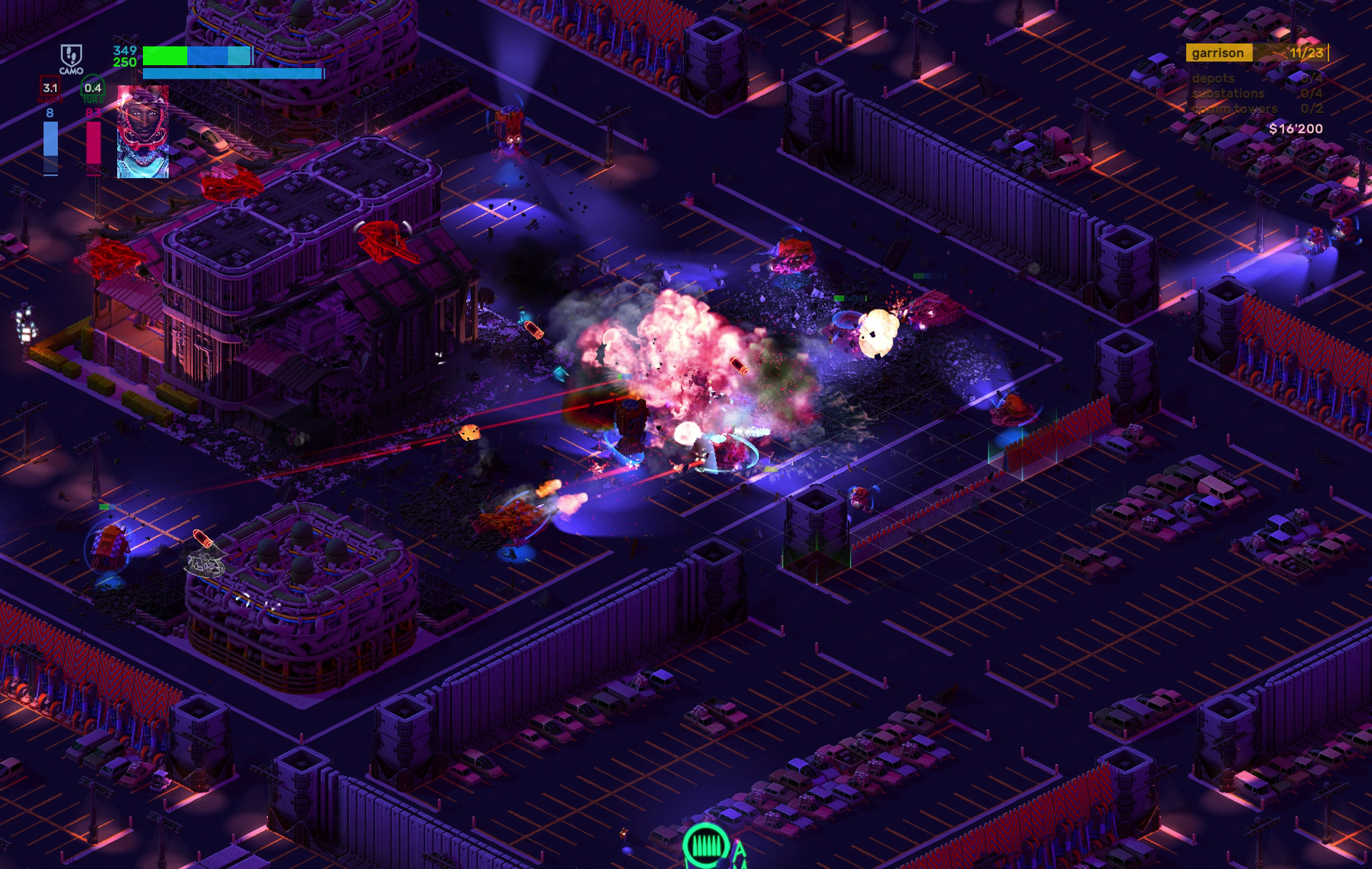
I pop out of stealth just as I get behind cover, and the enemy beelines for me. I hit shift to make my mech lower its legs and present its upper half as a reinforced bunker. I fire off a long-range strike using my mouse, but gauging the proper distance is tricky: the lasers zap to where my cursor points, indicated by the bright aiming and elevation guides floating between my Thunderclap and reticle. It's a nice pairing of aiming skill with the top-down mainstay of a point-and-shoot system. The guides change shape depending on which weapon I bring to the field—artillery, for example, bends the guide into an arc to illustrate height and distance of a lobbed shell. Such creative mechanics and a distinct armory are what make Brigador fun, but only after dedicating enough death-fueled time and struggling with its cumbersome controls does it truly thrive. In the meantime, it’s a gorgeous audiovisual treat.
Neon city blues
Brigador is a pixel art paradise. When I wasn’t desperately watching my dwindling shield and ammo bars sealing my fate, I was riveted by the densely packed scenery—Stellar Jockeys has shoved an astonishing amount of minutiae into Brigador’s isometric cyberpunk industrial tangle and orderly countryside manses. I was especially fond of tiny flairs of character: patterned streetlight illumination; a shantytown nestled beneath a pipeline; window AC units dotting clusters of apartment high-rises. Purples, blues, and reds dominate the palette of night city sprawls and tech gardens of bottom-lit generators. It’s as if someone took their SimCity project and dunked it into a bucket of ‘80s dark science-fiction.
Brigador’s music is an exclamation point to its lo-fi look. Composer group Makeup and Vanity Set have perfected works of synth-heavy chords and digitized beats that makes me think of Joe Satriani solos, chromed sunglasses, and auto-seeking VHS players. Listening to the club-like pulse of tracks such as Solo Nobre while gazing across a dystopian mega-city is just as strong a reason to give Brigador a try as wreaking hot laser havoc.
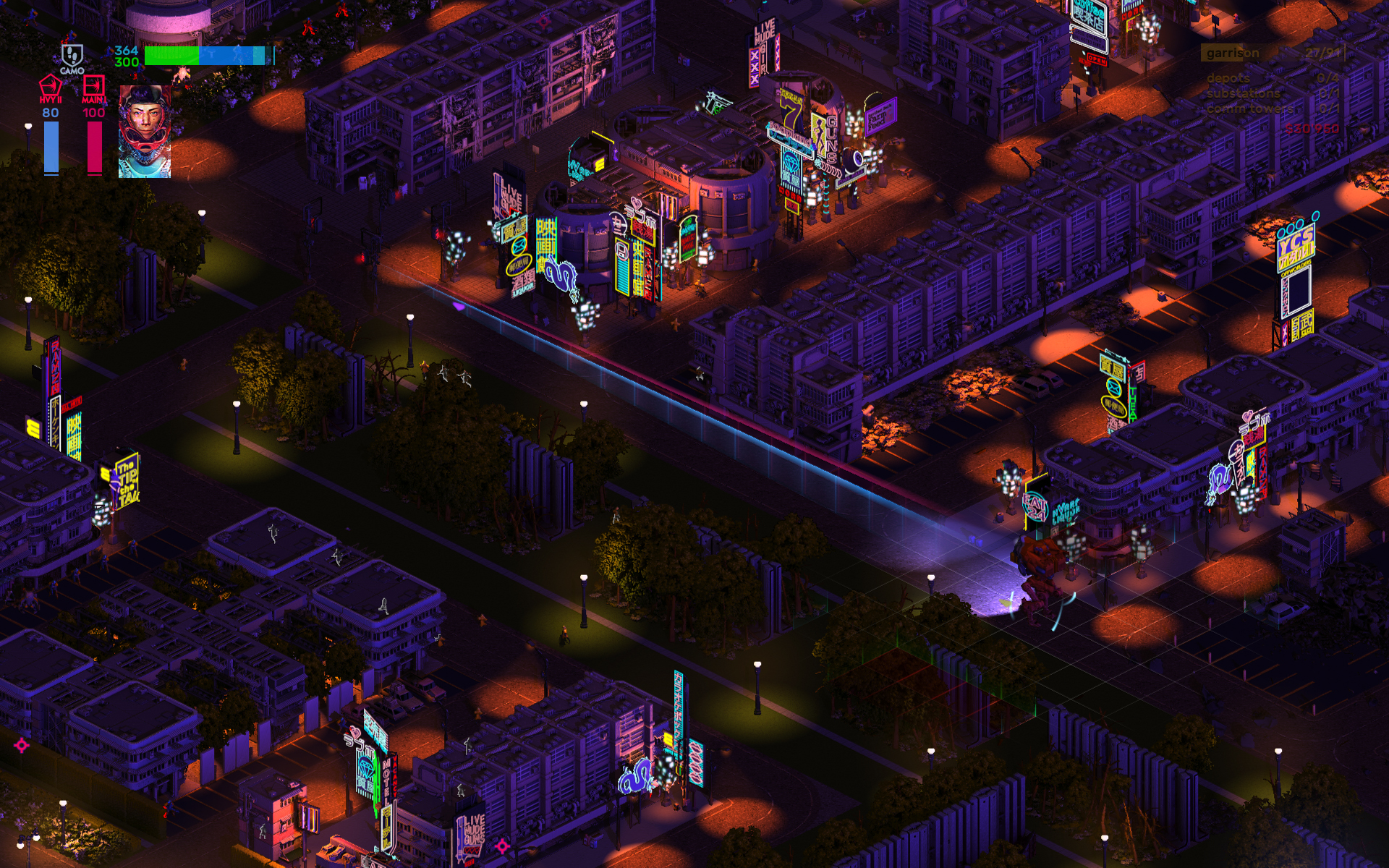
Everything blows up in satisfyingly meticulous fashion, of course. Blowing things up is Brigador’s central theme, and driving that theme is a team of mercenaries piloting a small army of mechs. There’s a faintly gonzo story here involving factional conflict amid an despotic government, but keeping tabs on the surprisingly novel lore was far from necessary to grasp the straightforward objective of fireballing designated targets or structures—think Just Cause’s Rico Rodriguez driving something out of a Tiberian Sun factory for a basic gist.
Loadout, roll out, blowout
The campaign presents four preset vehicle loadouts for each stage. They essentially represent a difficulty slider from “cakewalk” to “please kill me.” The easiest option usually bestows a beefy mech bristling with powerful long-range armaments, while the hardest is little more than a fragile, if quicker, pea-shooter demanding a strong familiarity with the chosen level to survive past the first few minutes. This contrasts with freelance mode, where I had the freedom to choose a pilot and customize my mech’s chassis and four weapon slots before deploying into a skirmish stage. I missed that added flexibility in the campaign’s 21 missions. Sticking with the same mech and pilot would have imparted some character-driven progression.
Trampling, stomping, shooting, or vaporizing every piece of scenery and enemy hardware—it can even be a row of bushes—awards money which funds freelance mode unlocks of additional equipment, missions, and personnel but serves little additional purpose beyond a rudimentary high score value. Vehicles can be bipedal mechs, traditional tanks, or hovering assault platforms, but I favored the more eccentric amalgamations such as a treaded schoolbus with a railgun welded onto its roof.
The arsenal assortment is vast: shell cannons, phosphorous grenade launchers, heat rays, something called a Disco laser, and plenty others. The sheer volume of weaponry made it tough to keep track of specific characteristics, but I delighted in experimenting with various loadout combos and adjusting the tactics needed to survive the ensuing mayhem.
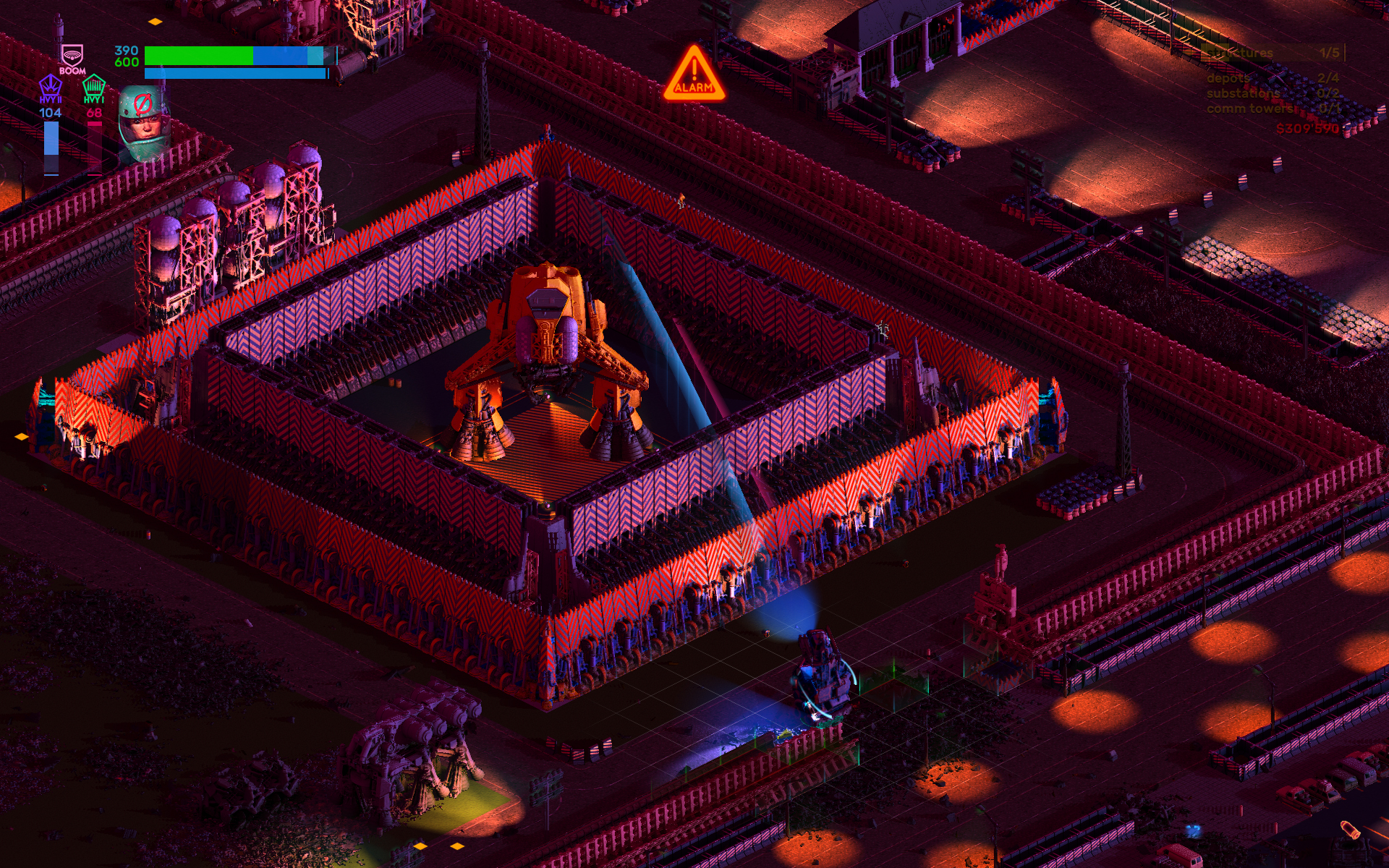
Training treads
Where Brigador hits a snag is its suddenness of death amplified by a full mission reset on a single loss. My screen frequently became so clouded with flying firepower, explosions, and zippy enemy mechs that I couldn’t easily spot fatal danger until it was too late. I yearned for my status bars to sit nearer or perhaps above my mech instead of shoved into the upper-left corner, as shifting my eyeballs to check my ammo or armor was often enough of a split-second distraction to end in ruin.
The absence of mid-mission saves or checkpoints teetered defeat between a Souls-esque educational tool and a desk-flipping frustration.
My screen frequently became so clouded with flying firepower, explosions, and zippy enemy mechs that I couldn’t easily spot fatal danger until it was too late.
Maintaining a sense of direction took extra effort largely in part to the tank-like controls and the mental gymnastics of finagling twin independent orientations for my mech’s upper torso and legs. There’s an option to add a directional arrow at the mech’s feet, but its small size and yellow coloration was too easily smothered in the thick environment. I could also hold down another key to lock my angle to my mouse; that helped quite a bit, but I was bewildered from its lack of a toggle feature.
Most tedious was attempting fine movement in an antigrav: strafing was relative to where the vehicle faced (which always pointed with my mouse) instead of the static camera position. Turning a corner or dodging fire sometimes glued me onto a wall; worse, I’d occasionally juke into the midst of the enemy’s position and get immediately cut down. I wasn’t much of an antigrav advocate after completing a few missions, so I tended to stick with the more grounded and less floaty vehicle types.
Brigador yet excels at delivering a finely detailed destruction sandbox. I relished taking advantage of the huge array of arms and armor to see how far I could get with a zany loadout (Hint: try the Parliament cannon). Combat engages tactical thinking—I loved crouching behind walls for extra cover or cloaking for opportunely devastating flanks. My ears are addicted to ‘No Way Out.’ Get it for a challenging, retro-drenched mech smasher, but be be prepared to stomp through some UI and control roadblocks.
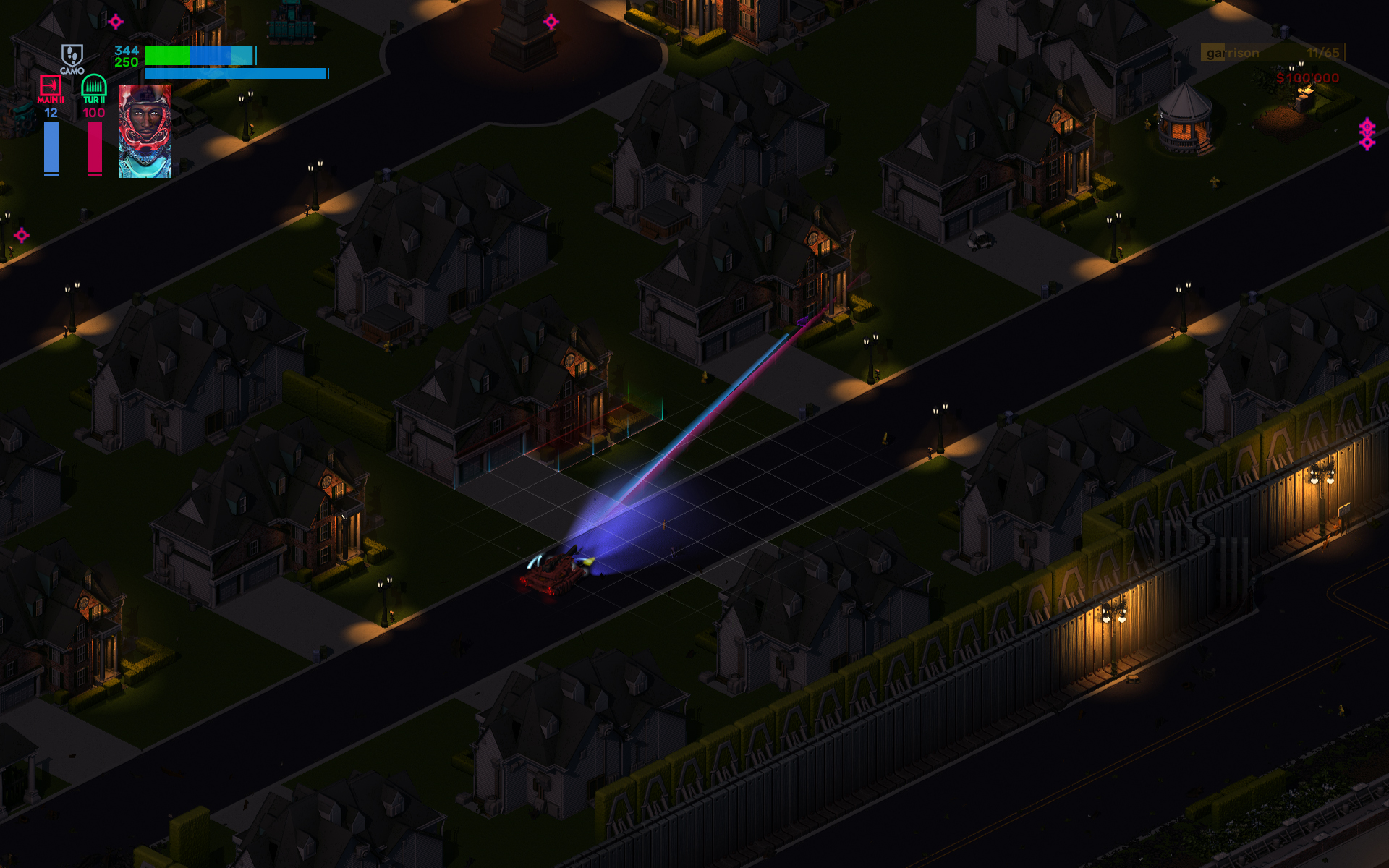
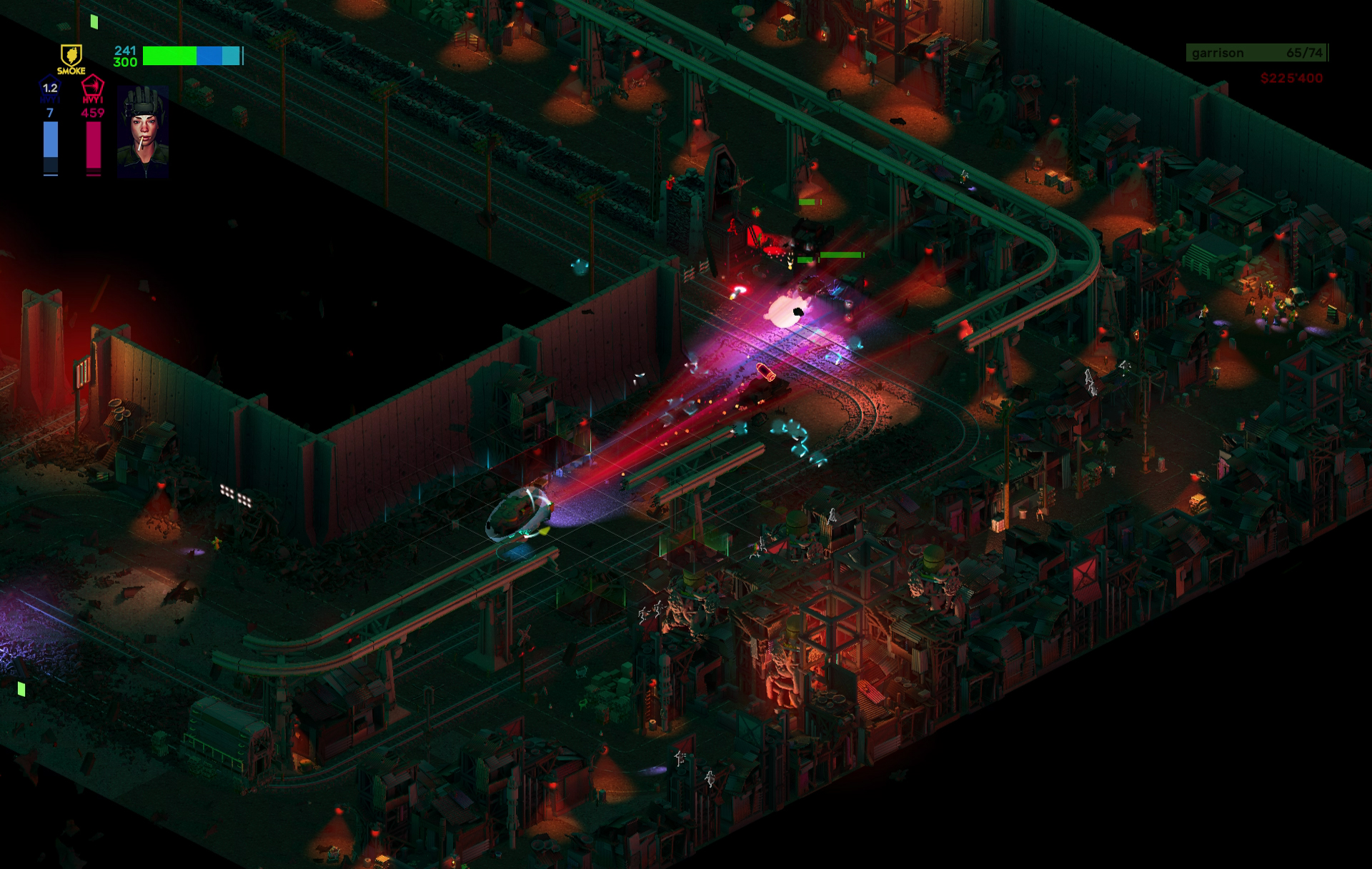
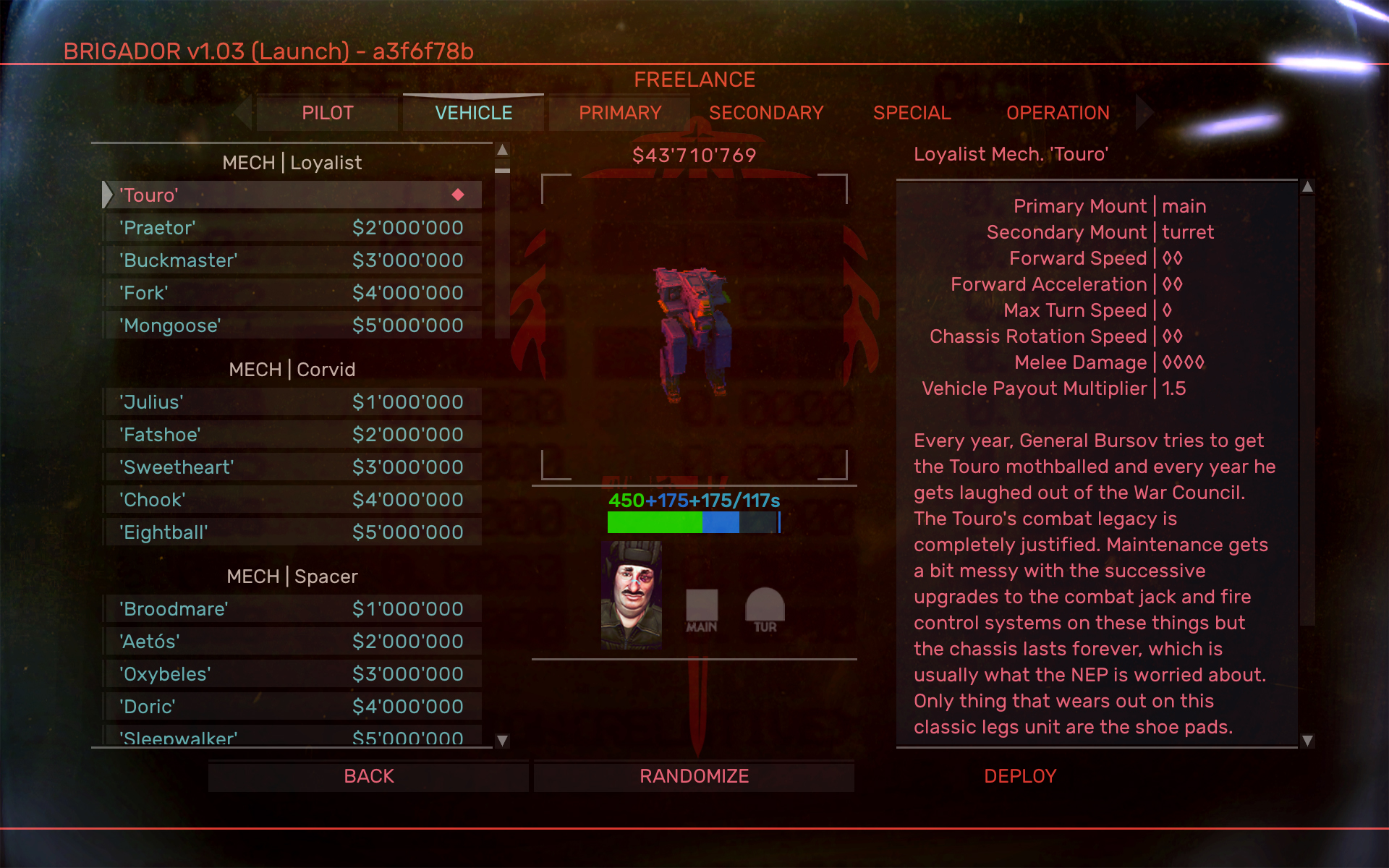
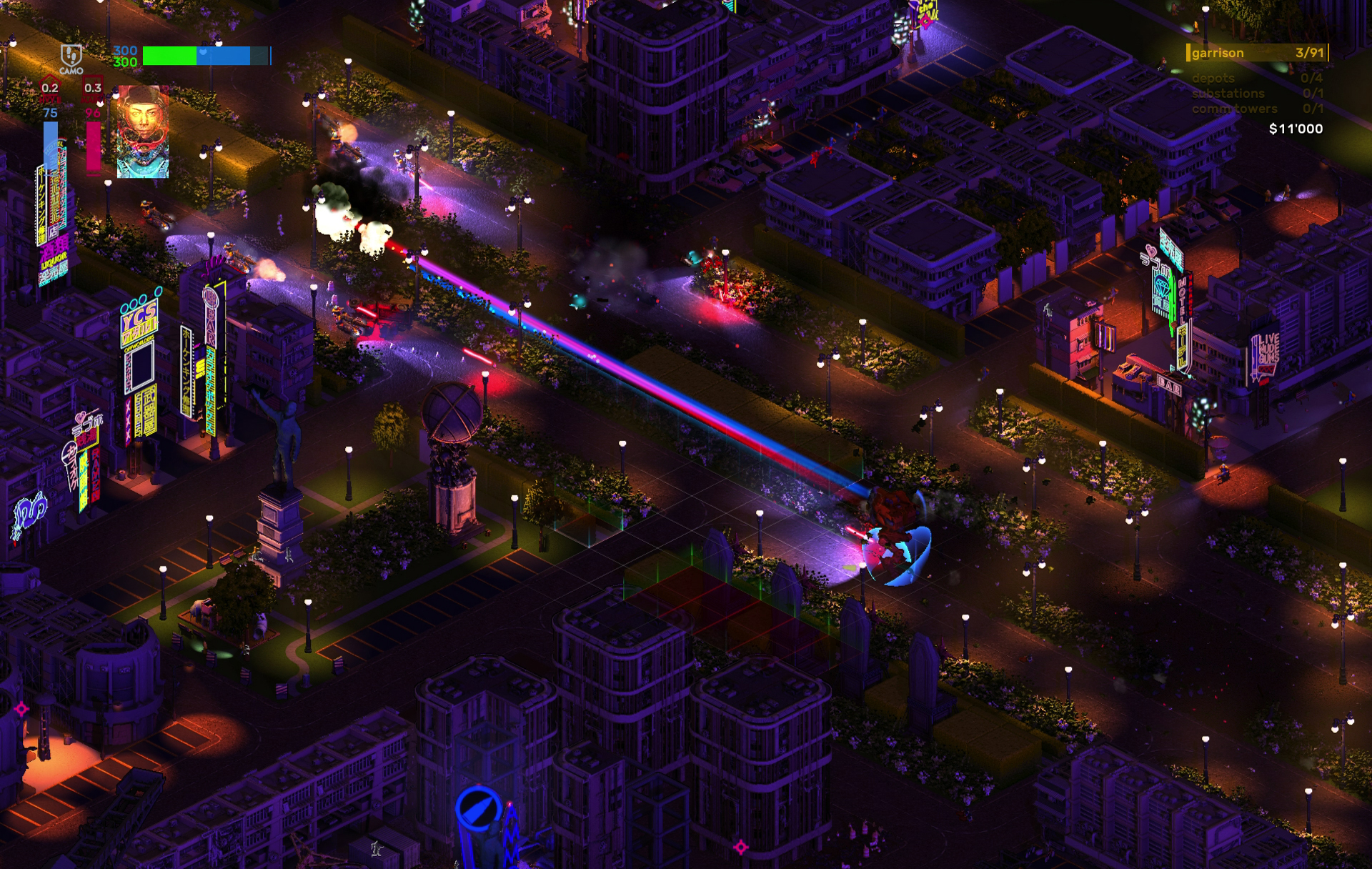

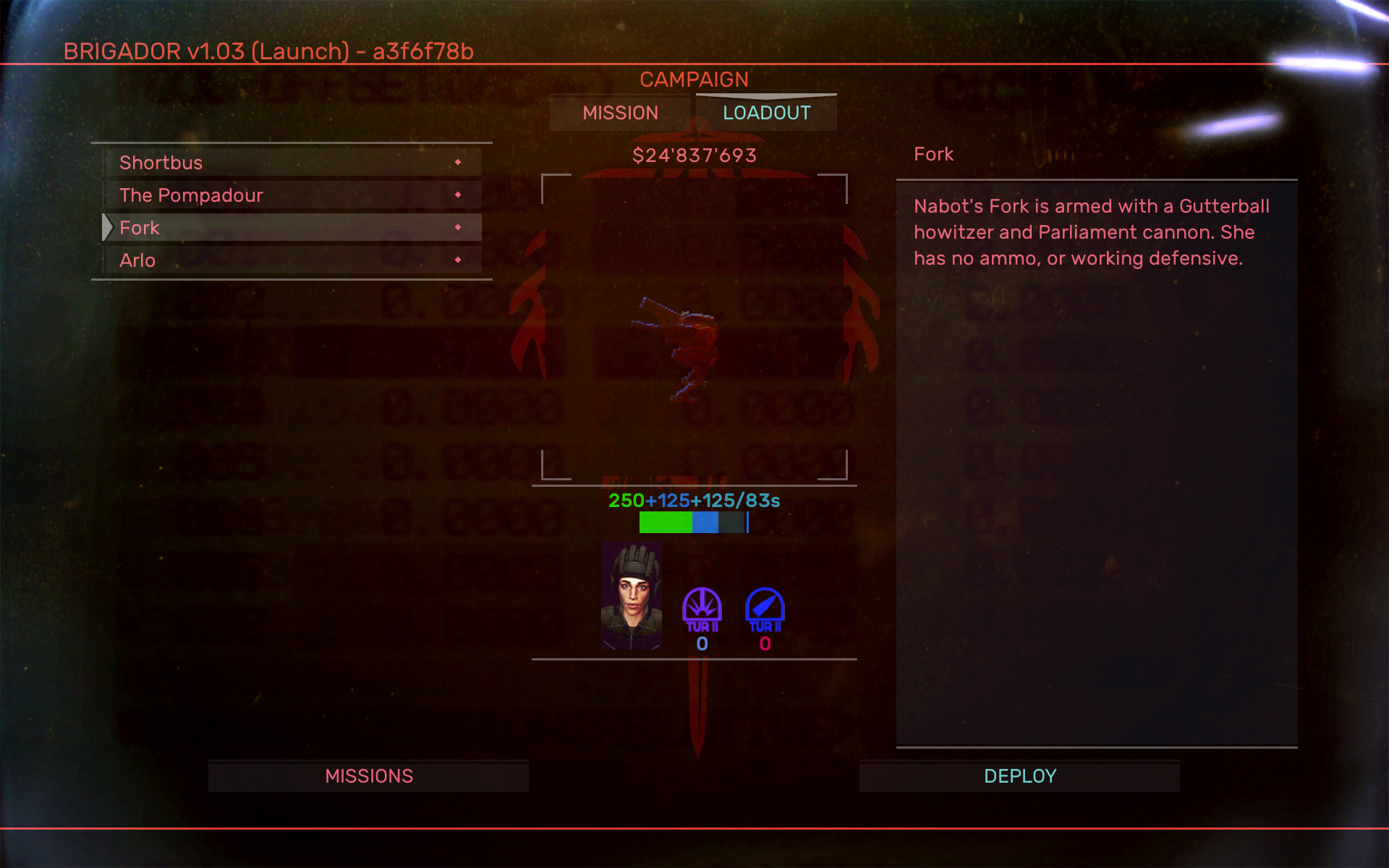
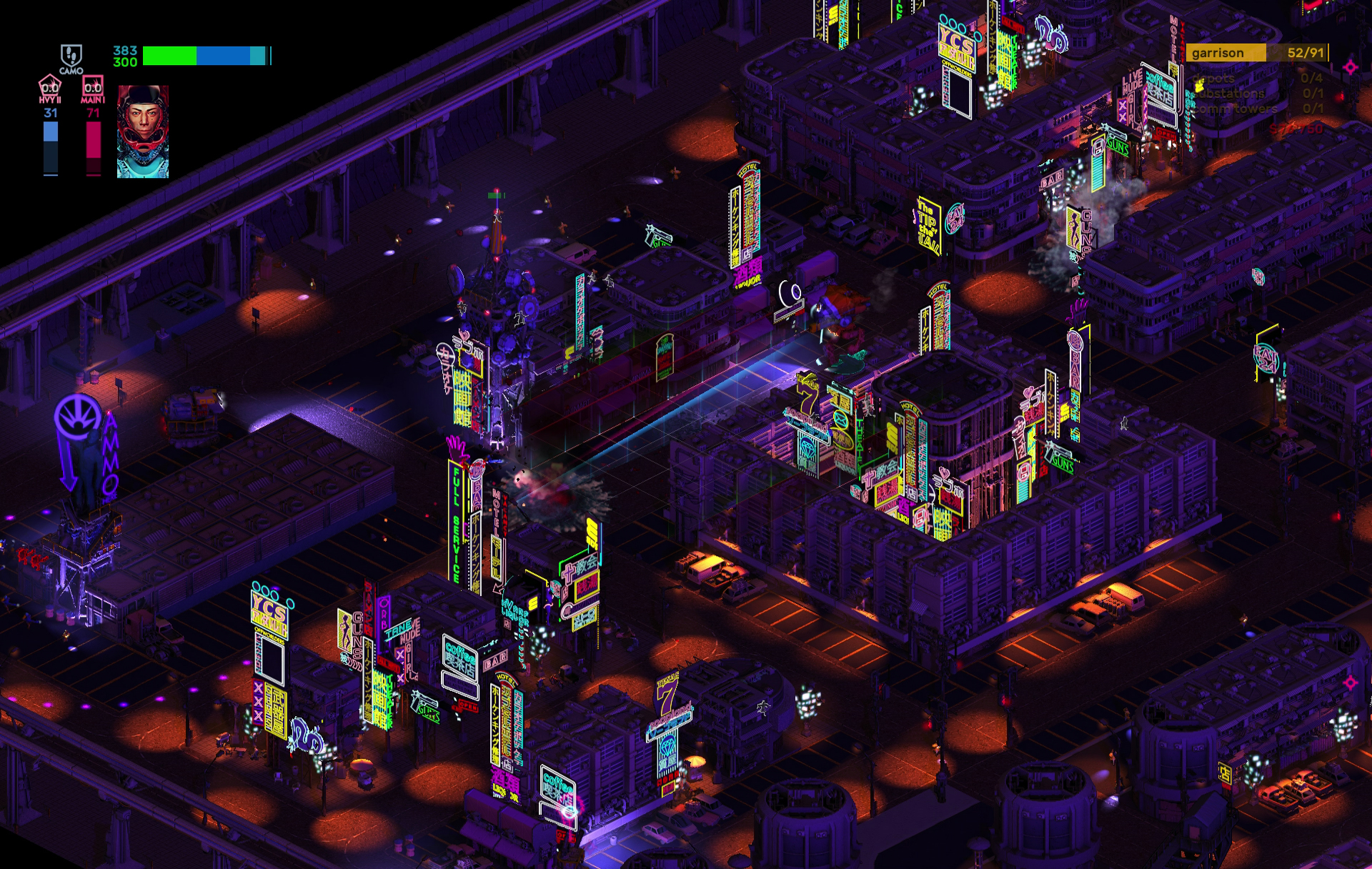
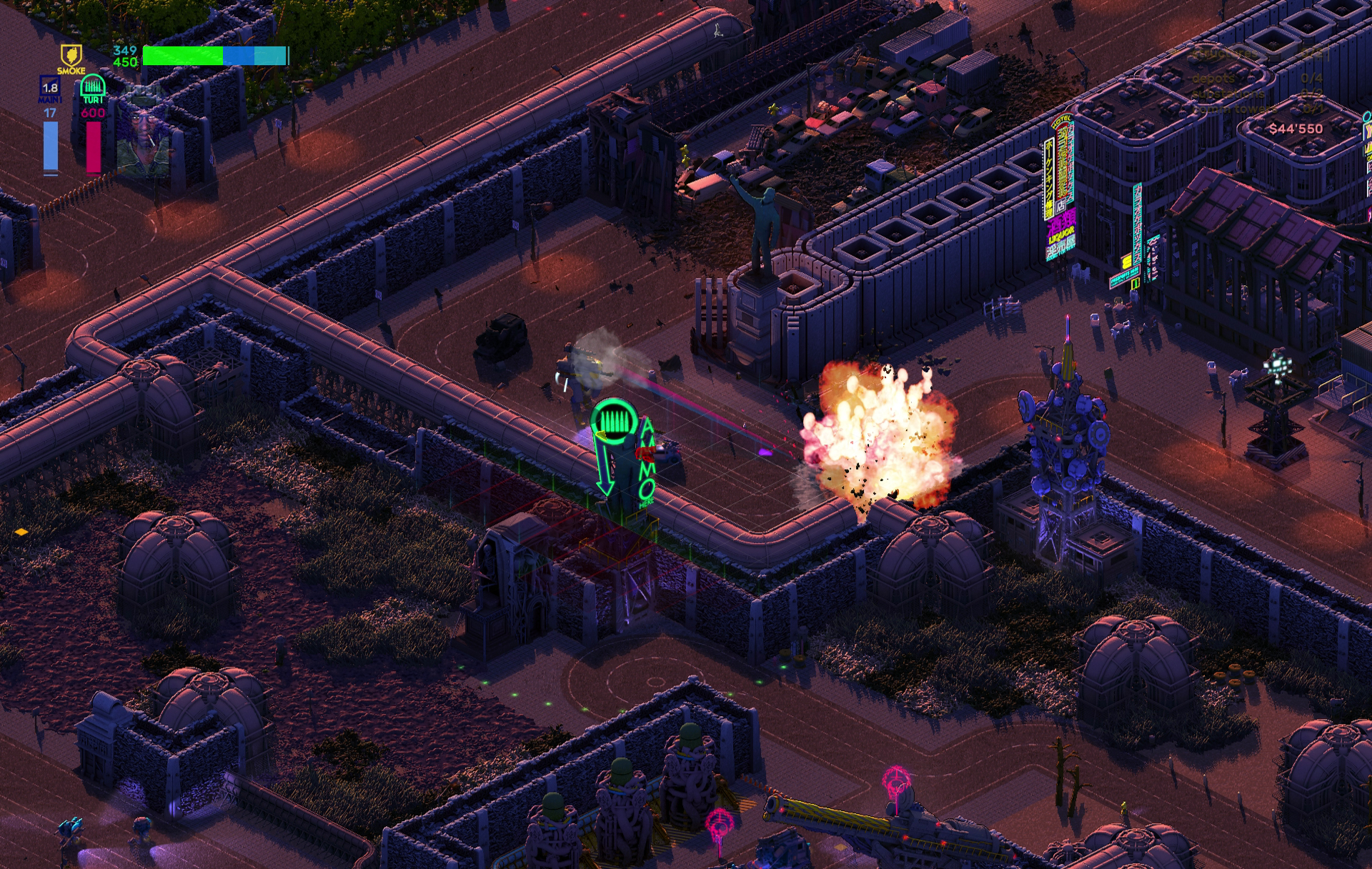


Beyond a fairly daunting control and difficulty curve, Brigador is a gorgeous isometric shooter with a remarkable level of strategy.
Omri Petitte is a former PC Gamer associate editor and long-time freelance writer covering news and reviews. If you spot his name, it probably means you're reading about some kind of first-person shooter. Why yes, he would like to talk to you about Battlefield. Do you have a few days?
